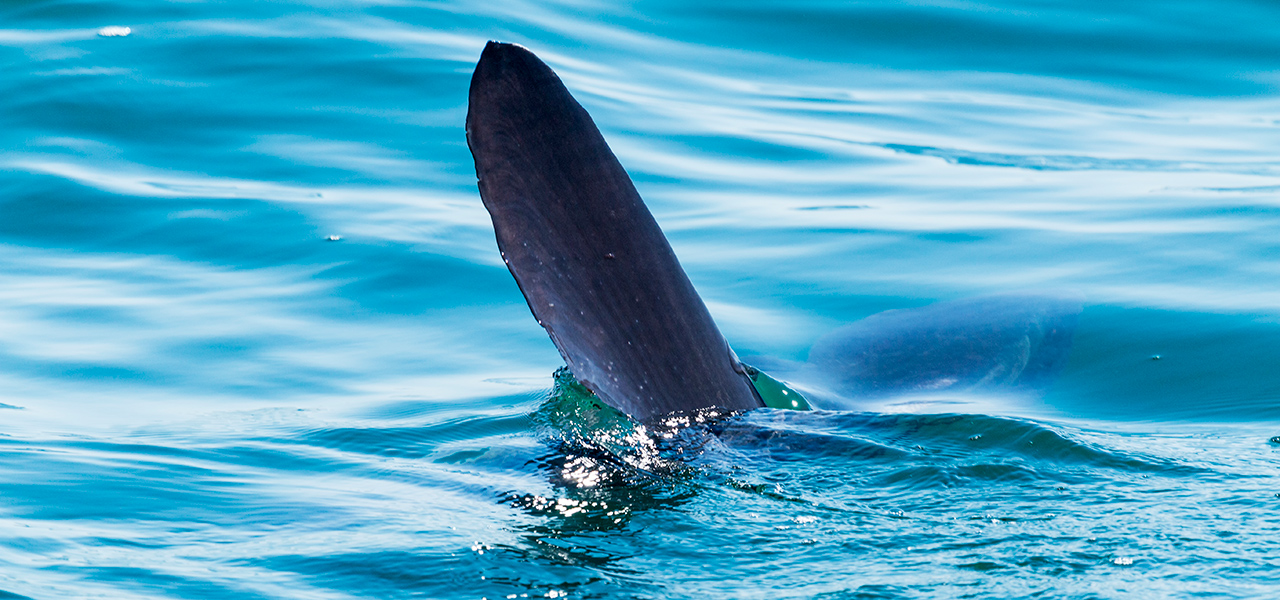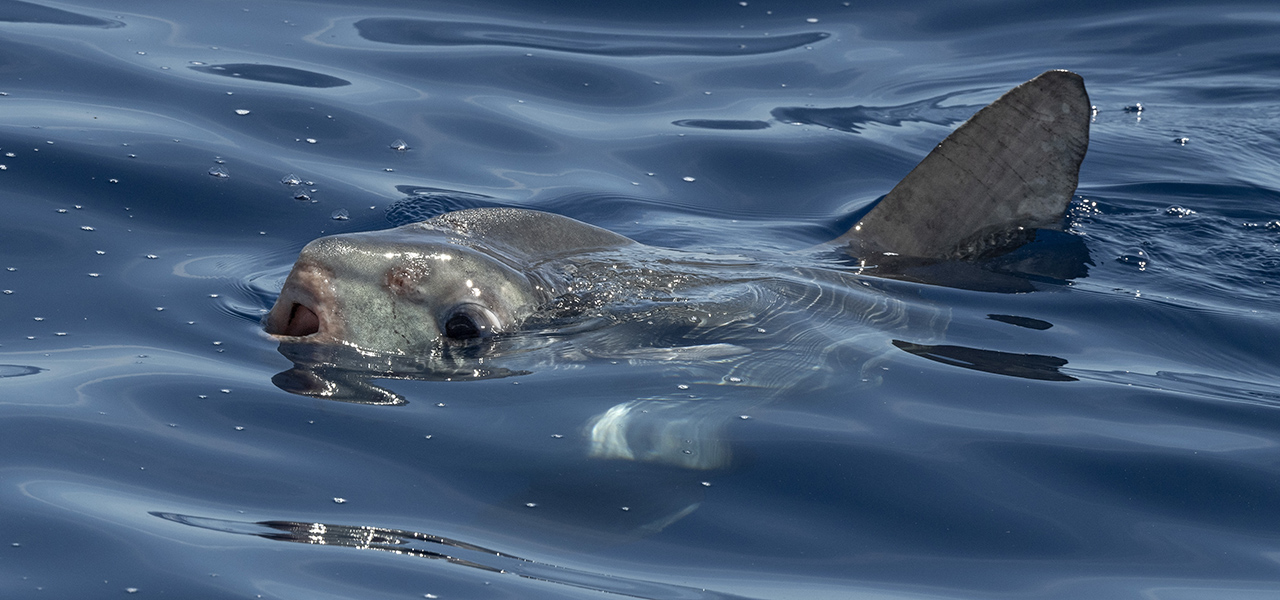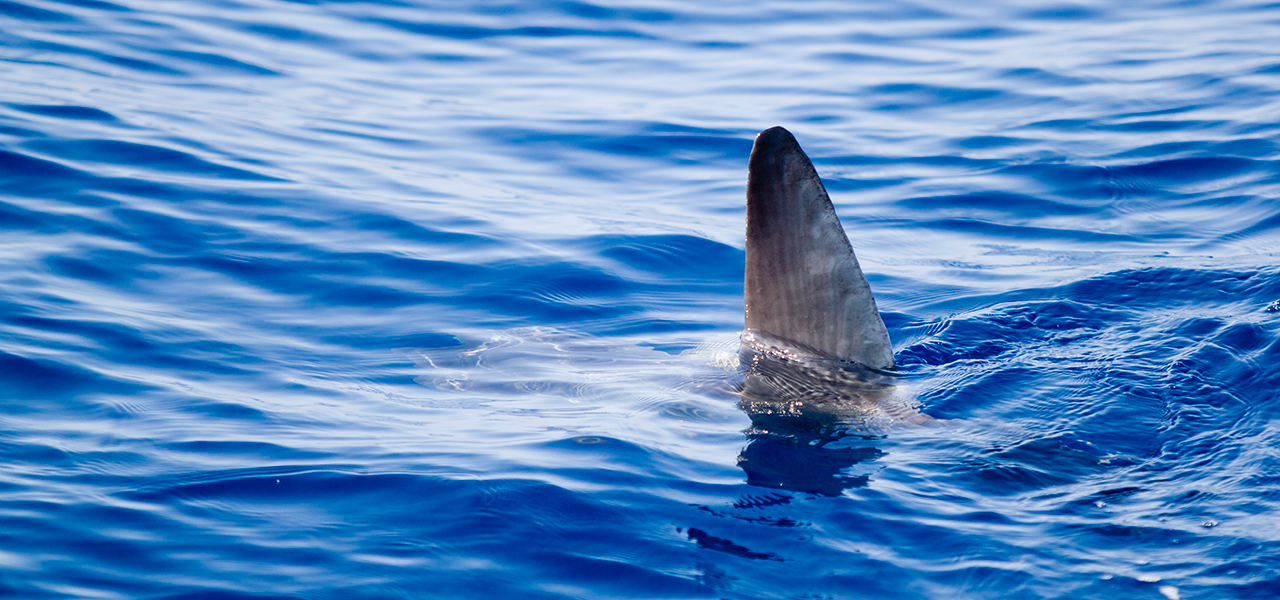Sunfish vs. Shark: The case of mola identity theft
By John Chisholm on Saturday, October 07, 2023

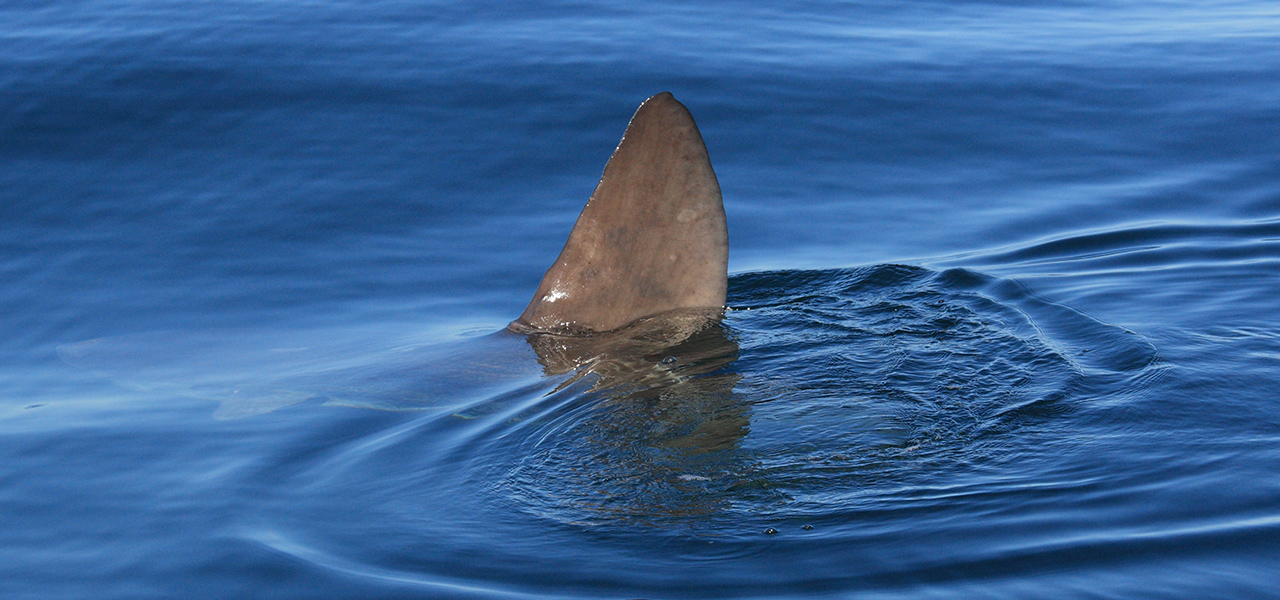
You’re enjoying a day on the water when you suddenly spot a large, triangular fin breaking the surface. Your heart skips a beat, and your mind thinks “OMG! SHARK!” But as quickly as it appeared, it disappears and you’re left wondering, “What did I just see?” The majority of encounters reported as white sharks are similar to this: witnesses catch a glimpse of a fin, but not every fin belongs to a white shark or even a shark for that matter. Although white shark sightings have been on the rise over the past few years, many of these reports turn out to be cases of mistaken identity.
How can such a strange looking fish be so good at impersonating sharks?
One of the species most often misidentified is the ocean sunfish, also known as the mola (scientific name: Mola mola). This is surprising because sunfish are one of the strangest looking fish in the ocean. An up-close look at this unique fish may cause you to wonder how it could possibly be confused with a white shark. Its stubby body gives the appearance of an animal cut in half, since sunfish do not have visible tails like other species of fish. Instead, they have a bumpy rear end known as a “clavus” which serves as a rudder and helps the fish steer. However, it’s not the body shape but the dorsal fin that leads to confusion. The sunfish has a large, triangular dorsal fin that can look like a white shark fin but is subtly different. Sunfish dorsal fins are tall and narrow with a rounded top. White sharks’ dorsal fins, on the other hand, are wider with a sloped front and straight trailing edge, usually coming to a point at the apex.
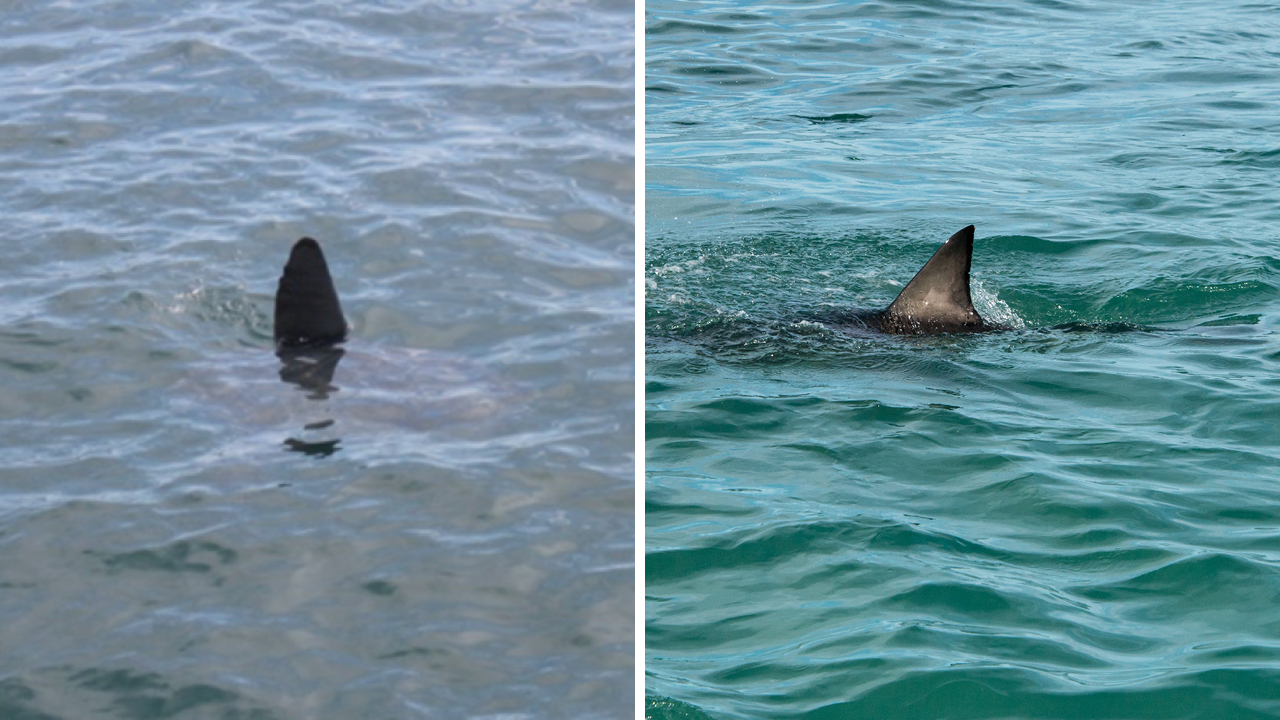
Mola behavior: sharky at the surface, silly from below
When seen at the surface, their dorsal fins can easily be confused, but it’s the motion of the sunfish’s dorsal fin that is the key to distinguishing it from a shark. Witnesses will often report a fin that appears then disappears, only to reappear over and over again. This is a result of the sunfish’s unique swimming style. Unlike sharks, sunfish use their large dorsal and anal fins as paddles, moving them back and forth to generate propulsion.

Ocean sunfish surfacing
The dorsal fin of the ocean sunfish often goes up and down while they swim. Note that their swimming movements are often erratic, so the fin will sometimes stay out of the water for several seconds at a time before submerging.
Another behavior of the ocean sunfish that adds to the confusion is its ability to breach. Often witnesses are convinced that they saw a white shark because it leaped out of the water, but sunfish are suprisingly capable aerial acrobats. Ocean sunfish are the heaviest bony fish species in the world and their flat, wide bodies often make a tremendous splash upon re-entry, like someone dropping a barndoor on the surface of the water. Many times, they will put on quite a performance, breaching multiple times in a row.

“Jaws” for jellyfish
The irony in this case of mistaken identity is that the white shark feeds on large prey and can pose a threat to humans, while the ocean sunfish prefers jellyfish. Even giant ocean sunfish have very small mouths, and it’s amazing that such a huge animal can survive on a diet of jellyfish. Despite these differences, the majority of “shark sightings” from the public over the past couple of years have turned out to be ocean sunfish.
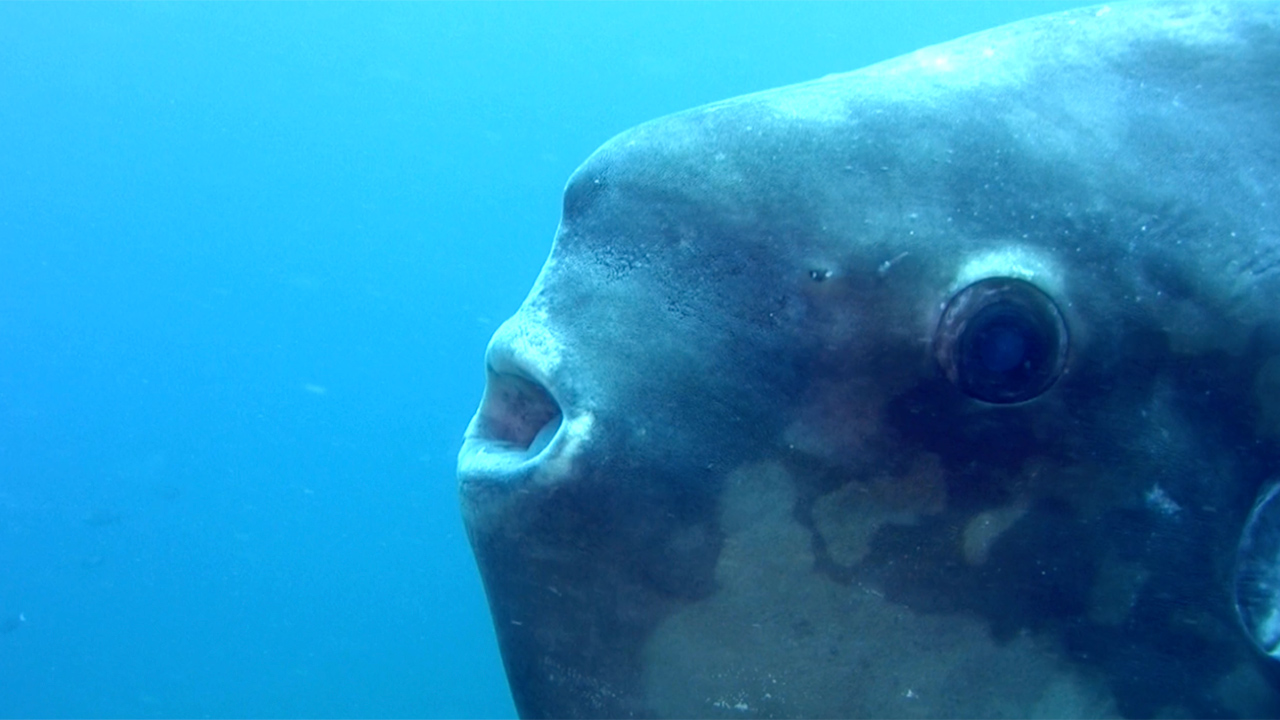
Mola mouth
Ocean sunfish primarily eat jellyfish and their mouths are perfectly adapted for that task. As you can see, this is very different from a white shark!
Based on what you know, can you study the fins below and tell which are white sharks and which are ocean sunfish?
Remember that a white shark dorsal fin is usually more triangular whereas a sunfish dorsal fin is slightly more rounded.
/
Are you ready for the answer? The first fin image is an ocean sunfish, and so are all of the others. That’s right, every one of these images is from an ocean sunfish – no sharks!
What to do if you see a fin
Regardless of whether the fin belongs to a sunfish or a shark, it’s always best to err on the side of caution until it can be positively identified. Calmly and safely exit the water. Notify lifeguards or beach rangers as well as other bathers in the area. Once you’re at a safe distance, try to get a photo or video of the fin, which can help local officials make an identification. You can report your sighting through the Sharktivity app where it will be reviewed and shared with the public if it is confirmed to be a white shark.



